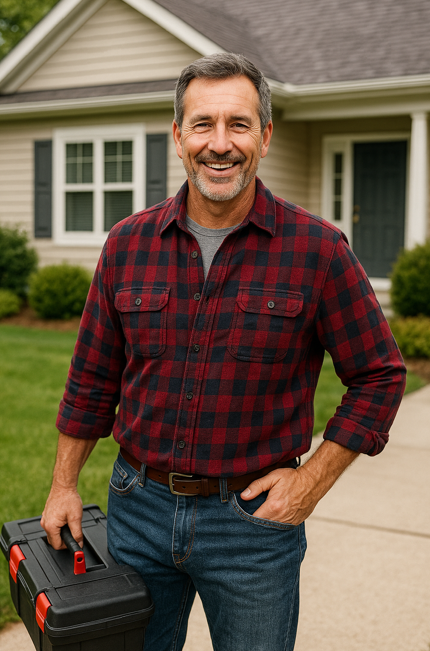Why This Checklist Matters
No one wants callbacks, fines, or system failures. With R‑32's A2L rating (mildly flammable), you’ve gotta play it by the rules. Mike’s seen installs go sideways because someone cut corners. This guide keeps you sharp, safe, and inspection-ready.
Pre‑Installation Survey
Before the gear even hits site:
-
Confirm local building and fire codes for A2L systems (some areas now demand special ventilation or leak sensors).
-
Assess existing condensers or ductwork—maybe they can't handle the new R‑32 pressures.
-
Check foundation: is the slab rotted, uneven, or too close to noise-sensitive areas?
-
Gameplay: measure twice, cut once—get heights, setbacks, and piping lengths on paper.
Site Prep & Layout
You’ll need ample breathing room—not just for your crew, but to comply with A2L inhalation thresholds:
-
Level, ventilated area for the outdoor unit; avoid enclosed spots that trap refrigerant.
-
Indoor unit access: ensure you can reach wiring, filters, and airflow paths easily (no one likes to tear out walls mid-service).
-
Noise management: keep units away from bedrooms and neighbors—use rubber pads or mounts.
-
Secure grounding wires—NEC/NFPA/ANSI89 compliance is non-negotiable.
Tools & Equipment Checklist 🛠️
You can't use your old R‑410A kit—R‑32 demands A2L-rated precision:
-
Refrigerant manifold gauges + hoses rated for R‑32 pressures.
-
Spark-free vacuum pumps & recovery machines—no chance for ignition during evacuation.
-
Electronic leak detectors tuned to R‑32 (or ultrasonic models) for pre-charge and startup checks.
-
Ventilation fans and CO/combustible gas detection tools—proactive safety.
-
Flame-resistant gloves, eye protection, and safety gear.
-
Calibration scales to weigh refrigerant accurately per spec.
Refrigerant Handling & Charging
Here's where Mike gets serious:
-
Purge the lines—no moisture or N₂ contamination.
-
Vacuum to <500 microns—ensures absolutely dry lines and keeps performance top‑tier.
-
Weigh in full manufacturer charge—don’t guess.
-
Add coolant slowly—use liquid charging only after vacuum, to prevent compressor slugging.
-
Restore nitrogen pressure before brazing to avoid oxygen oxidation.
-
Perform incremental leak checks, especially at brazed joints. Use the leak detector to walk the line.
A2L Safety Protocols
Let’s rub in that R‑32 clause: mildly flammable—but manageable.
-
No smoking or spark creation within 10 ft of refrigerant work.
-
Perform in open air or ventilated spaces.
-
Label all units “R‑32 / A2L”—visible for techs and future inspections.
-
Install leak sensors and shut-off valves per code.
-
Follow ASHRAE 15 and Standard 34 safety requirements—refer to Trane's A2L guidance trane.com.
Electrical & Wiring
Don’t skimp on this:
-
Check manufacturer’s electrical specs for breaker size, wire gauge, and short‑circuit ratings.
-
Use copper wiring only—vinyl insulation is a no‑go.
-
Ensure proper grounding path to building system; bond all units accordingly.
-
Tighten and test every terminal—loose wires lead to heat and failure.
-
Verify fan motors, compressor start, relays—no surprises.
Piping, Insulation & Leak Checks
Mike’s bread and butter:
-
Use R‑32 compatible copper lines and fittings—no cheap knock-offs.
-
Follow manufacturer limits on line length, height difference.
-
Insulate suction lines to prevent condensation and frost.
-
Use pressure relief and service valves as standard.
-
Hold nitrogen pressure during brazing—then test post‑brazing for leaks with your R‑32 detector.
Commissioning & Testing
This is where sparkle meets reality:
-
Bring system online using OEM startup checklist (air vs. water systems have different flow and setpoint protocols).
-
Read superheat and subcooling to ensure correct charge—adjust if necessary.
-
Test in both heating and cooling modes; monitor Delta‑T and airflow rates.
-
Measure amperage draw and compare to label specs—spot inefficiencies early.
-
Walk the line again for leaks—don’t overlook joints.
-
Calibrate thermostats, set proper ventilation schedules (defrost cycles, timers).
-
Demonstrate operation & maintenance to owner.
Documentation & Handover
Mike’s favorite part—tying it all up:
-
Provide charge sheet with actual refrigerant weight.
-
Hand over pressure test and leak check logs.
-
Include copy of EPA 608 certificate and local permit approvals.
-
Label system clearly: “R‑32 / A2L refrigerant”.
-
Offer owner a user guide—how to read error codes, clean filters, and schedule mid‑season checkups.
-
Schedule follow‑up in 30–60 days to ensure everything’s still tip‑top.
Mike’s Pro Tips 💡
-
Bring extra refrigerant—rips happen.
-
Use electronic scales, not volume estimates.
-
Double-check work area ventilation before charging.
-
Treat A2L like a toolbox conversation—talk about flammability at start‑of‑day.
-
Install leak detector alarms—save headaches down the line.
-
Stay nerdy on software updates—many OEM apps upload commissioning logs now.
Now Mike's covered every twist and turn you’ll hit installing an R‑32 heat pump—from paperwork to final startup. Follow this, check every box, and you'll walk away with a safe, efficient install that'll blow old HVAC out of the water (and avoid callbacks).
🧰Stay smart, stay comfortable, and I’ll catch you next time! - Mike🧰







